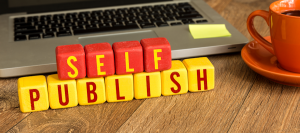
They say we all have a book in us somewhere, but how many people actually get that book out and use it to help them establish their reputation for being an expert in their field?
OK – let’s start at the beginning, but it might not be the beginning you had in mind!
Preparation
Before you start to think about writing you need to know your marketplace. Who are you writing for? How do you know they will buy your book? How will you ensure your book gets in front of them? If you don’t know who you’re writing for, then you’ll struggle to sell your finished product.
MYTH #1: If you get a contract with a publishing house they’ll market your book for you.
A few do some marketing, but conventional publishing companies will usually send a letter (not your book) to all the reviewers stating that it’s been published, a thumbnail of the content and a one line biog of the author, suggesting that a copy is requested to review. They might also sell the foreign rights – eventually. If you’re a first time author or unknown, be prepared to do your own marketing.
MYTH #2: If you find a publisher who hasn’t published a book like yours they might be interested to add to their catalogue.
On the contrary – if a publisher hasn’t published a book like yours, they have probably made a decision to stick to the genres in which they’re already successful. If you decide to pursue the publishing contract route you need to approach publishers that do publish books like yours, but haven’t published anything similar in the last year or so. Do your research.
MYTH #3: Getting a contract with a publishing house will ensure you earn more money from the book.
Nope! A first time book will usually get 7 1/2%- 10% of gross. You have to sell a lot of books to make much. Remember that a book can be rated a best seller with just 3000 copies sold.
The upside is that you don’t pay for editing, layout, cover design and publication, which you would have to do if you self-publish, but you keep much more of the money the book makes when you publish the book yourself.
When you arrive at the writing stage you’ll need to ensure you are writing for your target marketing, answering the questions they have and delivering information they will find valuable. More about that in the next section.
Writing
 Now you’ve discovered how to get focused on delivering a book that actually has a market, how do you go about putting it together?
Now you’ve discovered how to get focused on delivering a book that actually has a market, how do you go about putting it together?
If you’re a professional writer it shouldn’t be a problem, however, I’ve met a few people who have no problem writing business material, but, when faced with a blank screen and a book to write, get that well known ailment ‘writer’s block’.
Being a systems freak I long ago worked out how to eliminate this – and it’s not just because I’ve got that kind of mind. It is a process that ensures you have all your ducks lined up before you begin.
Step one: Get a piece of paper and draw a mindmap showing your chapters, give them a name relating to the subject matter (you can always change the name later, but it helps you to focus). Around each chapter heading add the subheadings that you think should be in that section of the book. If you’re writing fiction you can use this to create your synopsis for a potential publisher.
Step two: Take a fresh piece of paper and mindmap each chapter in the same way. If you’re writing non-fiction include anecdotes, case studies, examples, things to do (if it’s that kind of book), books you want to refer to and any other bits of information that contribute. If you’re writing fiction you’ll need to plot out the events and introduction of characters.
Step three: Create your chapter ‘recipe’. This is the structure that will underpin each chapter so that your reader feels comfortable as they move from chapter to chapter. If you’re going to start with a quote or a story, then do that for every chapter. Have a style and structure that you can maintain throughout the book. This is less of an issue with fiction, but don’t ignore this step, it’s a good discipline to consider how to put your story together – do you end each chapter on a cliffhanger or tie up the ends for that part of the story?
Step four: Do any reading or research you need to do for your chapters and add the information you’ve gathered to your chapter maps. For fiction writers this will include developing your characters and researching locations you plan to use.
Step five: Take each chapter content page from step two and fit it into the recipe you’ve created in step three. You should end up with an ordered list of headings for each chapter.
Step six: Take a chapter list and start writing following the order of subjects and writing about each one as you come to it. If you’re writing a fiction book, you probably need to start at the beginning. If you’re writing non-fiction you can start with whichever chapter you feel most comfortable about.
If you follow these steps you will find that your book progresses without the anguish of ‘I can’t think what comes next!’ It doesn’t mean you can’t move things about later on, but at least all the information will flow well and give you a great first draft to work on.
Getting published
 If you’ve done your planning and started writing your book, you’ll need to start thinking about publishing. There are a number of options:
If you’ve done your planning and started writing your book, you’ll need to start thinking about publishing. There are a number of options:
- Get a publishing house interested and get a contract
- Self-publish
- Publish it as an ebook and sell it online.
There are pros and cons to all these. Let’s take a look at the realities of these publishing methods.
Finding a publisher
This is most writers’ dream. Get a publishing contract and then sit back and wait for the royalties to roll in! Most people have heard of rejection slips and although there are things you can do to improve your chances of success, book contracts are still not easy to come by and require the hide of a rhino and buckets of persistence.
The first step is to know what a potential publisher will want to see in your submission. Most don’t want your entire manuscript – just a couple of chapters – but they will want you to have a clear idea of who your competition are and what your book offers that is new or different. Anything that is totally unique is unlikely to hit the target as the market has not been proven and book publishers are cagey about breaking new ground!
Find out which publishers publish books in the genre you’re writing in – Mills and Boon won’t be interested in a Horror story or a self-help book. Take a look at the publisher’s current catalogue and approach those who publish your genre, but haven’t published anything close to your niche subject in the last year or so. They are more likely to be interested if it fits their profile and they’re not competing with their own existing titles.
Advances are not unheard of, but less common with so many people writing books, so don’t count on it. A publisher will edit the book for you and do the cover design and layout. However, the marketing effort they put in is minimal for all but established authors or celebrities.
They will send a letter (not a copy of your book) to their list of book reviewers advising them that it’s a new release and telling them to request a copy if they wish to do a review.
They will probably make some effort to sell the foreign rights to publishing houses in other countries.
That’s about it!
This means that if you want to become a best seller you’ll need to get stuck into a marketing campaign and make as much effort as you would if you self-publish.
What will you make from each book sold? Between 7.5% and 12.5% of net sales. In other words, not very much.
Self-publishing

There are dozens of self-publishing houses, AuthorHouse, iUniverse, IngramSpark, Summertime, and many more. They all offer different packages and deals and you need to investigate what’s on offer before you make your choice. For instance, publishing with Amazon is easy – but you can’t then sell your book anywhere else, so take this into account before you decide.
Many self-publishing services are digital and offer print on demand (POD), which means you can have one book or 1,000 (or any other amount). You pay the same per copy regardless of the quantity as each book is published digitally. This is great if you don’t have a garage or spare bedroom to keep large quantities of books in, but, if you are planning on selling a lot of books it’s not the most cost effective way to print. Once you are printing more than 500 you probably need to look into offset litho printing. It’s much more cost effective.
They usually provide an ISBN number for your book so it can be listed. If you want the high street bookshops to stock it you’ll need to find out if your chosen self-publishing house offers distribution through the big book wholesalers (Gardners or Bertrams in the UK).
Just because you are self-publishing, doesn’t mean it doesn’t need to be professional. If you want to build a good reputation you’ll need to invest a good editor. Typically, self-publishing houses don’t offer editing services, they will publish anything you give them.
Don’t fall into the trap of getting a friend to edit your book – there’s a lot more to editing than simply proof reading for spelling, punctuation and grammar.
A good editor will charge anything between £15-£100 per 1000 words, depending on the quality of the raw material and the expertise of the editor. Most books go through at least two edits and a final proof read so, if your book is a modest 50,000 words you’ll be looking at somewhere in the region of £2,500 to get it edited.
Your revenue per copy vary depending on the self-publishing house you choose – but it’s likely to be much more than 12.5% and you have control.
Ebooks

In today’s digital world you can get this converted to Kindle and still sell it on Amazon. In fact, you can sell pdf ebooks on Amazon too – as well as on your own website.
The challenge is for those people who like to have a ‘real’ book in their hands. You are much less likely to sell to them in digital format.
Just because it’s an ebook, doesn’t mean it doesn’t need to be professional. Everything that applies to self-publishing applies to ebooks – you need a budget for editing, the graphics and maybe a template for your page layout.
What’s your return on this investment? Well, Amazon take a chunk, but if you sell it on your own website you get to keep all the revenue. With a good marketing campaign you can make considerably more than you would with the same amount of effort when you have a book contract with a publisher.
Promotion
I’ve made most of the mistakes that authors make when it comes to getting sales. However, I’ve learned a lot over a period of time and my advice is:
- Know WHO your market is
- Know WHERE they hang out
- Give them an outrageous offer
Of all the book-marketing experts I’ve learned from I rate two.
- Nick Stephenson, who created the programme Your first 10K readers. This is an ongoing learning programme that covers every aspect of writing and publishing a book.
- Richard McMunn, who has become a self-made millionaire through publishing books. I have managed to get access to his one day training course (in recorded form) for an idiotic price of just £297 – and you can get that here.
The secret is in planning ahead and having a step-by-step process you follow that lead directly to the results you want.
